Stay in the know on all smart updates of your favorite topics.
Open evenementen voor het testen van innovatie [Innovation wanted!]

Evenementen in de stad willen we verder verduurzamen en toegankelijker maken. Vaak vinden evenementen plaats op centrale plekken waar mensen bij elkaar komen en waar veel afval, drinkwater en consumptievoorzieningen zijn. Dit zijn goede plekken om nieuwe innovaties te testen en verder te ontwikkelen. Tot 29 februari kunnen ondernemers zich inschrijven om hun innovatie te testen via het In Residence programma Open Evenementen.
In Residence programma
Innovatieve ondernemers kunnen zich inschrijven voor het In Residence programma van het stedelijk innovatieteam, waarin open evenementen in Amsterdam worden ingezet voor het testen van innovaties. Het doel van dit programma is om kennis te ontwikkelen voor zowel het verduurzamen van evenementen, als voor het vinden van praktische oplossingen voor een toekomstbestendige stad.
Geselecteerde ondernemers krijgen daarbij professionele begeleiding bij het verder ontwikkelen van hun innovatie en de mogelijkheid samen te werken met ambtenaren en evenementenorganisatoren. Voor het testen van hun innovatie krijgen ondernemers een budget tot €15.000,- toegewezen. Het programma duurt 6 maanden, van mei tot en met oktober 2024. Op 26 april worden de 8 ondernemers bekend gemaakt die dit jaar aan het programma mee zullen doen.
Het In Residence programma Open Evenementen vindt plaats in aanloop naar het jubileumjaar 2025 – het jaar van Amsterdam 750 en SAIL – dat groots gevierd zal worden in de hele stad. Innovaties die de komende tijd op evenementen worden getest en door ontwikkeld kunnen mogelijk een rol hebben tijdens de grootschalige evenementen die dat jaar plaatsvinden.
Evenementen als proeftuin
Meerdere grote evenementen nemen deel aan het programma. De organisaties van onder andere Pride en de Marathon bieden geselecteerde ondernemers mogelijkheden om innovaties op thema’s als duurzaamheid, circulair, mobiliteit, inclusie en toegankelijkheid te testen tijdens deze evenementen. Kansrijke innovaties krijgen hierdoor de mogelijkheid om door te ontwikkelen en een positieve bijdrage te leveren aan de opgaven van de stad.
Innovatieve ondernemers kunnen innovaties opgeven binnen de volgende thema's:
- Voedsel
- Circulaire materialen
- Circulaire verpakkingen
- Mobiliteit
- Inclusiviteit en toegankelijkheid
- Extreem weer
- Digitale veiligheid
Er is ook een wildcard voor een kansrijke innovatie die buiten deze categorieën valt.
De Inschrijving verloopt via: https://innovatiepartners.nl/project/open-evenementen-2024/ en sluit op 29 februari.
Meer informatie over hoe wij samenwerken met ondernemers vind je op:www.innovatiepartners.nl. Op 6 en 8 februari vinden er twee informatiewebinars plaats waarin meer verteld zal worden over het In Residence programma en de selectieprocedure. Ook is er dan ruimte om vragen te stellen.
A new challenge: Floating neighbourhoods with AMS Institute and municipality of Amsterdam

A lot of what we did in Barcelona was about making connections, sharing knowledge, and being inspired. However, we wouldn’t be Amsterdam Smart City if we didn’t give it a bit of our own special flavour. That’s why we decided to take this inspiring opportunity to start a new challenge about floating neighbourhoods together with Anja Reimann (municipality of Amsterdam) and Joke Dufourmont (AMS Institute). The session was hosted at the Microsoft Pavilion.
We are facing many problems right now in the Netherlands. With climate change, flooding and drought are both becoming big problems. We have a big housing shortage and net congestion is becoming a more prominent problem every day. This drove the municipality of Amsterdam and AMS institute to think outside the box when it came to building a new neighbourhood and looking towards all the space we have on the water. Floating neighbourhoods might be the neighbourhoods of the future. In this session, we dived into the challenges and opportunities that this type of neighbourhood can bring.
The session was split up into two parts. The first part was with municipalities and governmental organisations to discuss what a floating neighbourhood would look like. The second part was with entrepreneurs who specialized in mobility to discuss what mobility on and around a floating neighbourhood should look like.
Part one - What should a floating neighbourhood look like?
In this part of the session, we discussed what a floating district should look like:
- What will we do there?
- What will we need there?
- How will we get there?
We discussed by having all the contestants place their answers to these questions on post-its and putting them under the questions. We voted on the post-its to decide what points we found most important.
A few of the answers were:
- One of the key reasons for a person to live in a floating neighbourhood would be to live closer to nature. Making sure that the neighbourhood is in balance with nature is therefore very important.
- We will need space for nature (insects included), modular buildings, and space for living (not just sleeping and working). There need to be recreational spaces, sports fields, theatres and more.
- To get there we would need good infrastructure. If we make a bridge to this neighbourhood should cars be allowed? Or would we prefer foot and bicycle traffic, and, of course, boats? In this group, a carless neighbourhood had the preference, with public boat transfer to travel larger distances.
Part two - How might we organise the mobility system of a floating district?
In the second part of this session, we had a market consultation with mobility experts. We discussed how to organise the mobility system of a floating neighbourhood:
- What are the necessary solutions for achieving this? What are opportunities that are not possible on land and what are the boundaries of what’s possible?
- Which competencies are necessary to achieve this and who has them (which companies)?
- How would we collaborate to achieve this? Is an innovation partnership suitable as a method to work together instead of a public tender? Would you be willing to work with other companies? What business model would work best to collaborate?
We again discussed these questions using the post-it method. After a few minutes of intense writing and putting up post-its we were ready to discuss. There a lot of points so here are only a few of the high lights:
Solutions:
- Local energy: wind, solar, and water energy. There are a lot of opportunities for local energy production on the water because it is often windy, you can generate energy from the water itself, and solar energy is available as well. Battery storage systems are crucial for this.
- Autonomous boats such as the roboat. These can be used for city logistics (parcels) for instance.
- Wireless charging for autonomous ferry’s.
Competencies:
- It should be a pleasant and social place to live in.
- Data needs to be optimized for good city logistics. Shared mobility is a must.
- GPS signal doesn’t work well on water. A solution must be found for this.
- There needs to be a system in place for safety. How would a fire department function on water for instance?
Collaboration:
- Grid operators should be involved. What would the electricity net look like for a floating neighbourhood?
- How do you work together with the mainland? Would you need the mainland or can a floating neighbourhood be self-sufficient?
- We should continue working on this problem on a demo day from Amsterdam Smart City!
A lot more interesting points were raised, and if you are interested in this topic, please reach out to us and get involved. We will continue the conversation around floating neighbourhoods in 2024.
AMS Conference: Final call for submissions & keynote speaker announcement

We're thrilled to share another round of exciting updates on the AMS Conference (April 23-24, 2024). As a quick reminder, the submission deadline has been extended to November 14th, providing you with an opportunity to be a contributor to this multi-dimensional event celebrating urban innovation and sustainability. Submit your abstract, workshop, or special session here 👉 https://reinventingthecity24.dryfta.com/call-for-abstracts
🎙️ Meet our keynote speaker: Charles Montgomery
We are honored to introduce Charles Montgomery, an award-winning author and urbanist, named one of the 100 most influential urbanists in the world by Planetizen magazine in 2023. Charles Montgomery leads transformative experiments, research, and interventions globally to enhance human well-being in cities.
His acclaimed book, Happy City, Transforming Our Lives Through Urban Design, explores the intersection between urban design and the emerging science of happiness. His presentation at the AMS Conference, "Your city should be a trust machine," delves into the critical role of trust in human happiness and societal success. As the world grapples with a trust deficit, Charles Montgomery shares insights drawn from over a decade of using lessons from behavioral science and psychology to turn cities into better social machines.
🚀 Don't miss your chance to contribute to the future of cities! For more details about submissions and to submit your abstract, workshop, and/or special session, visit our conference website 👉 https://reinventingthecity24.dryfta.com/call-for-abstracts
Exploring the Future of Data in the Circular Economy: Highlights from Data Dilemma’s!
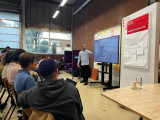
Amsterdam, a city with an ambitious goal of becoming fully circular by 2050, envisions a future where materials are continuously reused, waste is minimized, and resource cycles are closed. Achieving this vision hinges on the availability and analysis of data, which allows us to assess the extent to which materials are used, reused, or wasted. However, this data is often elusive, complex to analyse, and, in some cases, not even recorded. These challenges surrounding circular data were the focal point of our recent event, "Data Dilemma's: Collecting Data for the Circular Economy."
During Data Dilemma's, we explore the possibilities for using data and new technologies to address urban and societal challenges, with a focus on responsible digitalization. The goal is to use data to make cities more safe, clean and accessible. But what happens to all the data that is collected? Which dilemmas do we encounter when we collect (personal) data to improve the city.
Apparently, the topic of this edition of Data Dilemma’s was not only of interest to the Amsterdam Smart City team, since this event was completely sold out. This was no surprise, with the three incredible speakers we had lined up: Mersiha Tepic (municipality of Amsterdam), Maarten Sukel (Picnic), and Joris Bouwens (Metabolic).
Mersiha Tepic: Circular Economy Monitor Amsterdam
Mersiha Tepic, Senior Researcher at the Research & Statistics department of the Municipality of Amsterdam, demonstrated the Circular Economy Monitor Amsterdam. This essential tool tracks Amsterdam's progress towards a circular economy and identifies areas requiring further attention.
The monitor gives interesting insights. For instance, it shows that the environmental impact of food is four times as big as the impact of the built environment, even though the amount of materials used in the built environment is four and a half times larger than for food.
It reveals that food has a very high environmental per kilogram compared to materials from the built environment. This is interesting because it makes the total environmental impact of food much higher than the impact of the built environment, even though the built environment uses four times as much mass in materials than food.
For more information on the circular monitor and all its insights, you can check out their (Dutch) website.
During her presentation, Mersiha also delved into the data dilemma she faces in this project—the scarcity of data from significant commercial entities operating within the city. The lack of data from these key players poses a considerable challenge to Amsterdam's circular ambitions, and Mersiha's work sheds light on the importance of bridging these data gaps.
Maarten Sukel: Data-Driven Precision at Picnic
Our second speaker, Maarten Sukel, a Data Scientist at Picnic Technologies, showcased how the online supermarket Picnic leverages data. He presented an innovative approach that combines traditional data sources with images, written descriptions, and geographical information to predict customer preferences accurately. By doing so, Picnic not only optimizes its supply chain but also minimizes waste, aligning with the circular economy's core principles.
Maarten's insights provided a glimpse into how data-driven precision can be a game-changer in the pursuit of sustainability and waste reduction, and he also gave a convincing sales pitch on why you should be a customer of Picnic.
Joris Bouwens: The Promise of Digital Product Passports
Closing the event was Joris Bouwens, a Project Manager and Senior Consultant at Metabolic's Circular Industries team. Joris shed light on Digital Product Passports and their potential to revolutionize the circular economy. These passports offer a comprehensive digital record of a product's lifecycle and environmental impact, empowering consumers to make informed choices and encouraging responsible consumption and recycling.
Joris's presentation highlighted the immense opportunity presented by Digital Product Passports in getting as much value from used products as possible. To fully illustrate the potential of Digital Product Passport, Metabolic has created a visualization of the data flows in four sectors: Electronics, Chemicals, Apparel, and Construction. You can find these visualizations here.
We extend our gratitude to our amazing speakers for their invaluable contributions and to our engaged audience for their active participation in the discussion.
In the next edition of Data Dilemma’s we will delve into the fascinating world of the underground. What cables, tubes, and other assets can be found there, how is the data on these assets shared, and how can we improve collaboration? We hope to see you there on the 26th of October.
Do you have any suggestions for which Data Dillema's we should uncover next? Let us know in the comments below.
Achieving Nature-positive Impact Through Science-based Targets
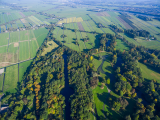
“To help protect and restore nature, what does my company need to do?”
The answer lies in science-based targets! With governments prioritizing climate and biodiversity goals, more businesses are eager to align their efforts. Science-based targets provide a clear roadmap for companies to make a positive impact on the environment.
Discover what science-based targets are, how they benefit businesses, and how Metabolic can support you in setting and achieving these ambitious goals.
#ScienceBasedTargets #NaturePositive
Opening Green Innovation Hub: startschot voor digitale innovatie in Almere
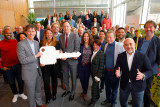
Op woensdag 22 februari heeft de Green Innovation Hub in Almere officieel zijn deuren geopend. De publiek-private samenwerking tussen de Gemeente Almere, Provincie Flevoland en telecombedrijf VodafoneZiggo richt zich op de ontwikkeling van digitale innovaties op het gebied van bouw, voedsel, energie, mobiliteit en (digitale) inclusie.
Almere bouwt de komende vijftien jaar 130.000 nieuwe woningen. Daarnaast wil de gemeente in 2030 klimaatneutraal zijn. Hiervoor is integrale, duurzame en inclusieve gebiedsontwikkeling belangrijk.
Broedplaats
De Green Innovation Hub is een broedplaats voor ontmoeting, samenwerking en innovatie. Partijen ontwikkelen digitale oplossingen voor een gezonde stadsomgeving, lokale voedselzekerheid, mobiliteit, circulair bouwen, energiedistributie en sociale verbondenheid tussen stadsbewoners. Gezamenlijke innovaties worden getest en opgeschaald op speciale ‘greenfield' locaties.
Open ecosysteem
De Green Innovation Hub is een broedplaats voor ontmoeting, samenwerking en innovatie. Partijen ontwikkelen digitale oplossingen voor een gezonde stadsomgeving, lokale voedselzekerheid, mobiliteit, circulair bouwen, energiedistributie en sociale verbondenheid tussen stadsbewoners. Gezamenlijke innovaties worden getest en opgeschaald op speciale ‘greenfield’ locaties. De Green Innovation Hub is een open ecosysteem, waarin partners, het bedrijfsleven, overheden en het onderwijs.
Innovatiekracht
Wethouder Maaike Veeningen: “Met deze samenwerking willen we de innovatiekracht van Almere vergroten. Digitalisering en technologie zijn daarbij onmisbaar, net als de kennis en kwaliteiten van inwoners van onze regio. Met de Green Innovation Hub in het hart van de stad laten we zien hoe belangrijk duurzame en inclusieve gebiedsontwikkeling voor ons is.”
Gedeputeerde Jan Nico Appelman: “Provincie Flevoland ondersteunt van harte de Green Innovation Hub: een plek waar samenwerken, innoveren en ontmoeten centraal staat. Digitalisering én duurzaamheid zijn twee thema’s die belangrijk zijn voor de ontwikkeling onze provincie. Hiermee past de Hub ook uitstekend in de groeiambitie van Almere."
Vragen van morgen
Laura van Gestel, directeur duurzaamheid van VodafoneZiggo: “Als telecombedrijf willen we onze impact op het milieu hebben gehalveerd in 2025. Tegelijk willen we twee miljoen mensen vooruithelpen in de samenleving. Hoe gaan we in de toekomst wonen en werken? Welke rol kunnen we daarin spelen? Belangrijke vragen die grote thema’s raken als zorg en mobiliteit, maar ook klimaatverandering en sociale ongelijkheid. Met de Green Innovation Hub willen we samen oplossingen ontwikkelen voor de vragen van morgen.”
Living with nature
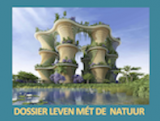
Today an article in the NRC about nature in the city. Last week, I published a new e-book (in Dutch) about this topic. Interested? Download it for free.
Donderdagavond in De Studio van NEMO
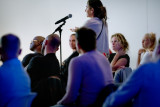
Om de week op donderdagavond organiseert NEMO een extra activiteit in De Studio. Speciaal voor volwassenen. De workshops, lezingen en dialogen gaan over energie en klimaat en sluiten aan bij het thema van de tentoonstelling Energy Junkies. Voorafgaand aan de activiteiten kun je de tentoonstelling bezoeken.
Geplande activiteiten
13 oktober 2022 - Inspiratiesessie - Eerste hulp bij klimaatstress
Na twee zomers kamperen in je tentje in Nederland wil je eindelijk weer eens op een verre vliegvakantie. Maar je schaamt je om het aan anderen te vertellen. Wil je lang douchen, maar vindt jouw partner dat niet goed voor het milieu? Twijfel jij ook weleens aan wat je nou echt kan doen voor een beter klimaat en ben je daar soms gestrest over? Of valt het in jouw ogen allemaal wel mee? In de inspiratiesessie Eerste hulp bij klimaatstress gaan we in gesprek over persoonlijke ervaringen met klimaatverandering. Houd je hoofd koel en ontdek samen met klimaatpsycholoog Jeanine Pothuizen hoe je het beste omgaat met emoties rondom het klimaat. Lees meer en reserveer tickets.
27 oktober 2022 - Lezing - Een hoopvolle toekomst
Klimaatverandering is de grootste bedreiging van het leven op aarde. Het is dan ook logisch dat de gevolgen soms zorgen voor een pessimistisch gevoel. En hoe meer je je in het onderwerp verdiept, des te sterker dat gevoel kan worden. In deze lezing legt cultuursocioloog Ruben Jacobs uit hoe we zover zijn gekomen en waar onze verantwoordelijkheid ligt. Maar hij vertelt vooral over hoop in tijden van klimaatverandering en welk verhaal we onze kinderen straks kunnen vertellen. Lees meer en reserveer tickets.
10 november 2022 - Stand up comedy - Comedy for Climate
Klimaatopwarming is niet het meest grappige onderwerp. Toch proberen we daar door middel van een stand-up comedy avond voor één keer verandering in te brengen. Waarbij we lachen om onszelf en het klimaat. Met alleen een microfoon zetten de comedians van Het Comedyhuis zware klimaatonderwerpen om in luchtige grappen. Een lekker avondje lachen dus. Want lachen is gezond! Om daarna met goede moed en op volle kracht te werken aan de oplossing. Lees meer en reserveer tickets.
24 november 2022 - Kledingruil - Swap till you Drop
Je kent het vast wel: je kledingkast puilt uit en toch heb je niets om aan te trekken. Vaak kun je anderen blij maken met jouw kleren – en anderen jou. Dus verzamel de kleding die jij niet meer draagt en kom naar de kledingruil in De Studio van NEMO. Onder het genot van een drankje ruil je de leukste jurken, truien en shirts. Goed voor je garderobe, én voor het klimaat. Lees meer en reserveer tickets.
Tickets
Voor een bezoek aan een activiteit op donderdagavond reserveer je een apart ticket. De toegangsprijs is: € 7,50. Het programma is inclusief een bezoek aan de tentoonstelling Energy Junkies. Reserveer hier je ticket.
Locatie en tijd
De activiteiten starten om 20.00 uur. Voorafgaand kun je vanaf 19.00 uur de tentoonstelling Energy Junkies bezoeken.
Adres: Kattenburgerstraat 5, gebouw 027A in Amsterdam. Volg de bordjes vanaf de hoofdingang aan de Kattenburgerstraat.
De Studio van NEMO
De Studio is een extra locatie van NEMO Science Museum op het Marineterrein in Amsterdam. De programmering in De Studio is speciaal voor volwassenen.
Winactie vrijkaarten NEMO De Studio
Wil jij weten hoe je het beste omgaat met emoties rondom het klimaat? Wil jij een avondje lachen om jezelf en het klimaat? Of heb jij kleding die je niet meer draagt die je wilt ruilen? Laat het ons weten in de comments, en wie weet win jij twee gratis tickets voor een donderdagavond naar keuze in NEMO De Studio.
Afval naar Oogst trekt de stad door!
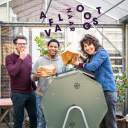
Niet langer hoef je jouw groente- en fruitafval weg te gooien, want samen maken we er lokaal waardevolle compost van, met Afval naar Oogst! Op 5 verschillende locaties in de stad kun je je nu aanmelden om GF-afval in te leveren. Op 23 april tijdens de kick-off leer je alle ins & outs. Zo maken we samen de cirkel rond. Composteer je mee?
Afval naar Oogst is ontsproten op buurttuin 'I can change the world with my two hands' waar nu meer dan 100 huishoudens hun GF-afval inleveren, dat wordt omgezet tot goede compost, voor nog betere oogst in de tuin! Het is de ambitie nog veel meer plekken te creëren voor lokale inzameling van groente- en fruitafval.
Digital tools as enablers of a circular economy. The Amsterdam case

In the 19th episode of the Better cities - the contribution of digital technology-series, I address the question of how digital technology can help in the long road to a circular society.
The contribution of digital technology becomes most visible when viewed in conjunction with other policy instruments and actions. That is why in this episode Amsterdam is in the spotlight; this city has been pursuing a consistent circular policy from 2015 onwards.
Why is a circular economy necessary?
European countries together need an average of 2.9 copies of planet Earth to meet the needs for raw materials. But even one Earth has finite resources, and it is therefore obvious that more and more countries aim to be circular by 2050. The circular processing ladder contains a range of options with the lowest step recovery of energy from materials unsuitable for re-use and furthermore recycling, repurposing, remanufacturing, renovation, repair, reuse, reduction, reconsideration to rejection.
A circular economy is an economic and industrial system that eliminates waste and takes the reusability of products and raw materials and the regenerative capacity of natural resources as a starting point, minimizes value destruction in the total system and pursues value creation in every link of the system. In this context, the term cradle-to-cradle design is often referred to. This is done in terms of material flows and the preservation of values, so that in the long term there is no longer any need for an influx of virgin materials. Maersk has developed a cradle-to-cradle passport, a first for the shipping industry, consisting of a database of all ship components, including all the steel, for recycling, reuse and remanufacturing of new ships or their parts.
The Digital Sustainability-memorandum is considering digitization as an enabler on the way to a circular economy. A fourfold distinction is made in this regard: (1) the coordination of supply and demand of materials, (2) facilitating maintenance and repairs, (3) improving the production process, and (4) supporting partners in chain cooperation. Examples of all these options are discussed below.
Amsterdam and the realization of circular principles
Amsterdam's ambition is to use 50% less virgin raw materials by 2030 compared to the current situation. This goal is also very important for achieving its climate targets: 63% of the CO2 emissions for which the city is responsible come from products and materials that are produced abroad. The municipal government can only partly influence this steam. That is why the policy focuses on three areas where the city has most influence, namely food and organic residual flows, consumption and the built environment.
Amsterdam published its first policy plan Amsterdam Circular: Vision and roadmap for the city and regionin 2015. The emphasis was on organic waste and the built environment. It included 75 action points and its approach was positively evaluated in 2018 and a new report was published. It was decided to continue with the same emphasis with the addition of food and consumption. The addition of consumption was obvious, because Amsterdam had been making a strong case for the sharing economy for some time.
Shortly after the publication of the new report, Kate Raworth’s donut-principles made their entrance. Remarkably, none of the previous reports contain a reference to her work on the donut economics. In May 2019, the first fruit of the collaboration with Kate Raworth appeared, building on the report from the previous year. The collaboration resulted in a new report Building blocks for the new Amsterdam Circular 2020-2025 strategy, involving many stakeholders from the sectors, food and organic residual flows, consumption, and construction. It resulted in 17 building blocks, named 'development directions'.
This report was based on the original 2012 publication on the donut economy. However, there turned out to be one pitfall. The original donut model was designed for global-level applications, which, according to Kate Raworth, cannot be directly traced to the urban level. The social implications of behavior in one city not only affect this city itself, but also the rest of the world. The same applies to the ecological aspects.
As a next step Kate Raworth invited representatives from Amsterdam, Philadelphia and Portland to join a task force and discover what a city-level donut model looks like. In each of these cities, dozens of officials and citizens participated in an interactive process. The result was a new model that uses four lenses to view urban activities: The first and second resemble the original lenses but applied at the city level, for example, the impact of local industry on local nature. The third is how activities in a certain city had a negative social impact on the rest of the world, think for example of clothing, produced under poor conditions. The fourth is the impact of local actions on nature worldwide.
These activities resulted in a new publication, The city donut for Amsterdam. It is an instrument for change that can be applied more broadly than to circular policy. In this publication, the new donut model is mainly used as a conceptual model. Instead of exact calculations, snapshots are collected as illustrations.
While city representatives were busy developing the urban donut model, the work towards the circular city continued unabated, resulting in the publication of the final circular strategy for the period 2020 – 2025 and the action plan for the period 2020 – 2021 at almost the same time. In terms of content, these plans are in line with the publication of the building blocks-report from 2019, including the application of the 'old' donut model from 2012.
In the following, I use both the strategy and the action plan to show the role of digital tools. At the end, I come back to the future role of the city donut.
Digital techniques in the circular strategy of Amsterdam 2020 – 2025
I align with the three value chains: food and organic residual flows, consumption and the built environment that are central to the strategy. Three ambitions are formulated for each of these three, further detailed in several action directions, each containing several projects, most with measurable results to attain in 2021. In addition, a couple of projects are described, that bare related to types of companies, institutions and the port. Finally, there are overarching projects, in which I will again pay attention to digitization, also because the role of the city donut will become visible here.
Below I briefly describe the three value chains, name the three ambitions for each, and give references to digital tools that will play a role within each of the three value chains.
Value chain food and organic residual flows
The municipality wants to combat food waste and reuse organic residual flows as much as possible. The role of regionally produced (plant-based) food will be strengthened in line with the Amsterdam food strategy. In realizing its objectives, the municipality participates in an extensive European project, Rumore.
The three ambitions are: (V1) Short food chains provide a robust, sustainable sensory system, (V2) Healthy and sustainable food for Amsterdammers and (V3) Food and organic residual flows.
Examples of digital tools
• GROWx vertical farm is a farm that aims to achieve maximum returns by applying artificial intelligence to the indoor cultivation of food crops, among other things.
• Restore is a measurement system and simulation model for Amsterdam and surrounding municipalities and companies that provides insight into the financial, ecological, and social effects of various forms of composting and bio-fermentation, including the use of biomass.
• The InstockMarket platform will map (surplus) food flows and - if possible - predict them so that the catering industry can anticipate this when purchasing. The data from this project will be linked to the circular economy data platform
• The Platform www.Vanamsterdamsevloer.nl makes all local food initiatives (including food events) visible and residents of Amsterdam can share news about food and urban agriculture.
Value chain consumer goods
The emphasis is on consumer goods that contribute substantially to the depletion of rare raw materials, their production is polluting and often takes place under poor working conditions. In addition, the impact on climate change is significant. The emphasis is on electronics, textiles, and furniture because repair is also possible in each of these cases.
Furthermore, a lot of profit can be made by good collection and reuse through sharing and exchange.
Here too, a multi-year research project funded by the European Commission is important. The Reflow project maps data on flows of materials and develops processes and technology to support their implementation.
The ambitions are :(C1) The municipality is setting a good example and will consume less; (C2) Together we make the most of what we have and (C3) Amsterdam makes the most of discarded products.
Examples of digital tools
• The municipality will develop digital tools within the (purchasing) systems that support civil officers in circular procurement.
• The West-district supports www.warewesten.nl. This website brings together the sustainable fashion addresses of Amsterdam-West.
• Using artificial intelligence, among other things, it is being investigated how the lifespan of various goods can be extended so that they do not end up with bulky waste. This can be used, for example, on the municipal website to offer the option of first offering goods for sale or for giving via existing online platforms before they are registered as bulky waste.
• Indirectly, it is worth noting that the municipality wants to make the use of ICT more sustainable by purchasing less equipment (for example through 'hardware as a service'), extending the lifespan of equipment and reducing its energy consumption.
Value chain built environment
This value chain was also chosen because the municipality has an important voice in what and where is built and in the development of the public space. The municipality itself is also a major user of buildings.
In terms of the built environment, circular construction can be achieved through large-scale reuse of construction waste. By ensuring that buildings can be used for more purposes, their demolition can be slowed down. Sustainable materials can also be used in the design of public spaces – from roads and bridges to playgrounds. In addition, consideration could be given to the climate-adaptive design of the city, resulting in cleaner air and dealing with increasing heat and rainfall.
The ambitions are: (G1): We do circular development together; (G2) The municipality sets a good example and uses circular criteria; (G3) We deal circularly with the existing city.
Examples of digital tools
• Introduction of large-scale application of material passports to have the most complete information possible on material use in all phases of the life cycle of buildings. This is linked to national plans, among other things by providing all materials with an OR code.
• Research into the possibilities of a (national) online materials marketplace. Such a marketplace will influence (local) material hubs, such as the Amstel III construction hub and the creation of circular business cases.
• Providing insight into the supply (demolition, renovation) and demand (new construction, renovation) of circular building materials and thus of circular material flows.
• Creating a digital twin of the public space and the subsurface to be able to furnish and maintain it functionally and circularly.
• Research in digital production due to the rapid development of digital production techniques and their applications, such as robots and 3D printing.
• Research into making the construction, equipment and water and energy consumption of data centers more sustainable.
• Research into which data about residents and users of buildings can be made public and which data should remain private.
The municipality could further simplify the process of permit applications by digitizing everything, enabling applicants to upload the necessary municipal data and construction drawings and calculating the BREAAM score. This applies to both new and renovated buildings.
Overarching theme: Data platform and monitor circular economy
On the road to a circular economy, a lot of data will become available and just as much data is needed to help citizens, companies, and institutions to make sustainable choices and to determine whether the goal of 100% circularity by 2050 is within reach. That is why a data platform and monitor is being developed. This numerically maps all material, recycle, residual and waste flows that enter, leave, and go around the city. This also makes it possible to calculate the impact on CO2 emissions. The data from the material passports and the materials marketplace are also integrated herein, if possible. The monitor also includes social aspects such as health, education, and equality. Relevant data will be open and accessible, so that it can be used for the development of new innovations and applications by the municipality and third parties, also to connect with other urban transitions.
The monitor connects to the four lenses of the city donut of Amsterdam and will collect the data that is currently missing to provide full quantitative insight. This also concerns the environmental impact of all materials that Amsterdam imports for its own consumption. Where the city donut is currently only a partially quantified, the monitor will continuously provide insight into whether the municipality is staying within the ecological preconditions or where it falls short with regard to the minimum social requirements.
Amsterdam's circular strategy and the resulting action agenda is ambitious and will inspire many other cities. Because many projects are small- and medium scaled, it is not yet possible to assess to what extent the strategy and action agenda help to achieve the targets (50% circularity in 2030 and 100% in 2050). Commitment to the development of the monitor is therefore crucial and the municipality will also have to keep an open eye on the parallel actions that citizens, the business community, the port and other institutions must take to achieve their share. After all, becoming circular encompasses much more than food and organic waste, consumption, and construction.
To document the process of the City of Amsterdam's adaptation of circular policy and the contribution of Kate Raworth, I have put together a brief dossier. This includes references to (copies of) all relevant reports and an indication of their content. This file can be downloaded by following the link below.:
https://www.dropbox.com/s/lntf8izqz7ghvqp/Dossier%20circularity.docx?dl=0
The interconnected city with nature, communities and resources

In December, the Metabolic Cities team created a series of 3 articles on what future cities can become based on interconnections with nature, communities and resources.
If you haven’t already, take a look and tell us what you think.
An inclusive nature city allows species to thrive: https://www.metabolic.nl/news/interconnected-city-nature/
Interconnected communities, vital for healthy cities: https://www.metabolic.nl/news/interconnected-city-community/
Reconnecting to resources brings operations within planetary boundaries: https://www.metabolic.nl/news/interconnected-city-resources/
Feeding the city

More than 50% of the European population currently lives in urban areas, a proportion that is projected to increase to almost 70% by 2050. Distributed small scale urban food growers can together make a difference in providing healthy food in cities, in a climate neutral and sustainable way. Zéger Nieuweboer, the founder of the urban food growers cooperation www.arnhemgroen.nl gave an interview about the YIMBY experience of small scale food growing.in the city.
Programma van Demodag #15 Energie & Circulair
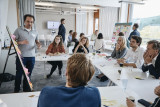
Volgende week donderdag 10 maart vindt de eerste demodag van 2022 plaats. De thema’s Energie en Circulair staan centraal, en het programma is inmiddels rond. Er staan weer mooie initiatieven en complexe vraagstukken op de planning.
Demodagen zijn onderdeel van ons innovatieproces en bedoeld om de voortgang van verschillende innovatieprojecten te stimuleren, hulpvragen op tafel te leggen, dilemma's te delen en anderen te betrekken bij projecten of uitdagingen. Meer informatie over wat de demodagen precies zijn en waarom je mee wilt doen, vind je hier.
Klinkt het programma interessant? Je bent meer dan welkom om aan te sluiten. Laat het ons weten in de comments!
Pitches:
SmartHoods
SmartHoods is een holistische aanpak om zelfvoorzienende buurten te realiseren. Dit concept is ontwikkeld door Spectral, Metabolic en de VU. Florijn van Metabolic is nu bezig dit concept zelfstandig verder te brengen. Zijn missie is om de meest leefbare en duurzame wijken te realiseren en vraagt de hulp van het netwerk om hieraan bij te dragen.
Green Light District / New Bauhaus - Gemeente Amsterdam / Hogeschool van Amsterdam
Het Green Light District project is opgezet om delen van de binnenstad en de Wallen te verduurzamen. De volgende stap voltrekt zit binnen de New Bauhaus oproep van de EU-commissie. Gemeente Amsterdam vertelt waar ze nu mee bezig zijn en nodigt het netwerk uit om mee te denken.
De Circulaire Monitor - Gemeente Amsterdam
De eerste versie van de Circulaire Monitor Amsterdam is een feit! Tijdens de Week van de Circulaire Economie is deze gelanceerd. Voor het eerst hebben we een totaalbeeld van alle materialen die in, door en uit de stad stromen, inclusief lokale productie en consumptie. Daarnaast hebben we berekend wat de milieueffecten van deze materiaalstromen zijn. Een game changer in onze journey naar een circulaire stad! Welke data vind je terug in deze monitor en wat kunnen wij ermee?
Werksessies:
De maatschappelijke kant van Smart Grids - Hogeschool van Amsterdam / Gemeente Amsterdam
Om de toenemende congestie op het energienet op te lossen, komen we met oplossingen als flexibilisering, energieopslag en energyhubs. Een slim energienet wordt nu vooral gedreven door acute problematiek. Maar hoe kunnen we deze innovaties breder maatschappelijk benutten? Wat is de sociaal-economische impact van smart grids en wat is er nodig om die te bevorderen?
Macht in de energietransitie - DRIFT
Minder macht bij grote bedrijven, meer macht voor bewonersorganisaties; hét gevolg van decentralisatie van productie en distributie, zeggenschap, eigenaarschap en winst en (overheids)sturing. Waar gaat de macht heen? Hoe wordt er met deze nieuwe macht omgegaan? En hoe kunnen we de impact ervan in goede banen leiden?
Circulaire Energietransitie
Een belangrijke stap in het verduurzamen van de regio is het circulair maken van alle technische maatregelen die voor de energietransitie worden ingezet. Denk aan windmolens, zonnepanelen, warmtepompen, of isolatiemateriaal. De angst bestaat dat een circulaire energietransitie tot vertraging of extra hoge kosten kan leiden. Toch zien we gelukkig al veel mooie initiatieven in ons netwerk en dit willen wij verder aanjagen. Waar moeten we dan beginnen?
De duurzame toekomst van Amsterdams afvalwater
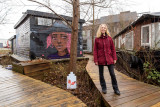
Als je de wc doortrekt, denk je waarschijnlijk niet na over wat er met het water gebeurt. Maar hier gaat een hele wereld achter schuil! En er wordt hard aan gewerkt, om die verborgen waterwereld duurzamer te maken. Als innovatietechnoloog bij Waternet houdt Enna zich bezig met het ontwikkelen van slimme afvalwatersystemen, en wij van De Gezonde Stad interviewden haar.
Wat is jouw droom voor Amsterdam?
“Dat water voor Amsterdammers meer waarde heeft. Dat we het meer respecteren. Nu is het zo vanzelfsprekend dat er water uit de kraan komt, zoveel en wanneer we maar willen. En we gaan naar het toilet, of onder de douche, of zetten de afwasmachine aan, en voor de bewoners is het water weg. Het zou fijn zijn als de hele cyclus meer circulair is. Dat afvalwater niet langer iets is wat vies is, maar dat we het gaan zien als een grondstof die we graag willen hergebruiken. Wat nou als je bij de bouwmarkt een toilet kan kopen die jouw urine apart houdt en daar meststof uithaalt die je zelf in je tuin kan gebruiken of af kan geven alsof het een statiegeldsysteem is. Dan krijgt het zoveel meer waarde.”
Lees op onze website het hele interview en leer de verborgen waterwereld kennen!
City of Amsterdam focuses on sustainability and circularity for the seventh edition of its Startup in Residence innovation programme.

The City of Amsterdam is on the lookout for innovators for the seventh edition of its Startup in Residence programme. This year’s programme will focus on the themes of sustainability and circularity, with the city looking for its best entrepreneurs, start-ups, scale-ups and SMEs to develop creative and innovative solutions.
The birth of a new green cooperative

In the city of Arnhem a new green cooperative is founded by the students and teachers of the course "Organic Growing in the City". The new cooperative is two years old and has 54 organic urban growers as members. You will watch the green cooperative growing in the future years.
CIRCO | Call for partners

Impact Hub Amsterdam is officieel CIRCO Hub van Noord-Holland. Dit betekent dat wij CIRCO Tracks voor MKB’ers gaan organiseren om innovatie binnen diverse circulaire thema’s te versnellen.
Heb jij een suggestie voor een goed thema of onderwerp? Dan komen we graag met jou in contact! Denk aan producten in bijvoorbeeld sectoren als bouw, textiel, plastics en voedsel.
Wil jij voor jouw bedrijf en/of branche een stappenplan en nieuwe visie omtrent circulaire ondernemingskansen ontwikkelen? Neem contact op.
Meer informatie over CIRCO en contactgegevens vind je op onze website > https://bit.ly/CIRCOhub
Circo Hub Noord-Holland is een initiatief van Impact Hub Amsterdam, Circulair West, Noorderwind en Natuur en Milieufederatie Noord-Holland.
A pebble can start a ripple effect
The time to make a change is now. The world is in motion: COVID19 lockdowns changed our perspectives on life as we know it, the cities we live in are exposed to devastating nature extremes this summer and the IPCC report fast-forwarded our sense of urgency. Do you have an awesome idea that can make an impact, then join the AMS Startup Booster to fast-track your idea. Deadline for applications is extended till September 12.
Are you wondering if the AMS Startup Booster can help you turn your business into a successful business. Then please get inspired by the stories of Mublio and Swugo.
Mublio bootstrapped their business and a year later they're selling their first product! Their first product is tailor-made, affordable, built-in cupboards to make efficient use of the space underneath your stairs.
Swugo wants to help reduce CO2 emissions in our urban environment and attribute to getting Amsterdam car-free by electrifying bikes. The Booster helped them to gain access to a European Mobility accelerator where they have extended their potential client base to other European cities.
Transforming the food system through impact-driven ventures

A sustainable food system is critical to our social and planetary well-being.
New initiatives have a big role to play, and Metabolic's newest venture, Fresh Ventures Studio, is looking to help build promising companies to solve systemic challenges.
Fresh Ventures is a venture-building program and startup studio based in The Netherlands. They co-found companies with experienced professionals and entrepreneurs to address systemic challenges in the food system.
If you're an entrepreneur looking into building a venture that responds to the world's sustainability challenges, sign up with Fresh: https://www.freshventures.eu/
More about its establishment and purpose from this article.
Reimagining our relationship with land through regenerative agriculture.
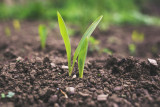
The term regenerative agriculture is popping up more and more often in news and articles. Often mentioned as the key to agricultural green transition, important for carbon sequestration purposes… but what is it exactly?
Regenerative farming, or farming in line with nature, also known as restorative agriculture or eco-agriculture, is a nature-based solution, and it is significantly different from organic farming.
Learn more from this article.
Stay up to date
Get notified about new updates, opportunities or events that match your interests.

